MEXICO — There is a steady rain at Region 9 School.
In the parking lot beside the school, flames and black smoke are shooting out of the top of a trailer. “It’s the real deal, I’m guessing it is around 300 degrees in there,” says Jon Longley, Region 9 Fire Science instructor.
In a nearby fire truck two students are in the “doghouse” or backseat. The “officer,” 17-year old Bella Brassard, rides in the front passenger seat. She will give commands and “she’ll have to think on her feet,” says Longley. Davey Goodwin is the “chauffeur,” or engine operator. He will come in “hot” with lights and siren.
When the alarm sounds they all jump down from the truck, and head toward the building. They use the hose and other tools to ram a solid steal prop door.
Kneeling in the mud, they “mask up,” and attach oxygen tanks on their backs. Next they stretch the handline in through the door. Inside the fire is raging.
They hit a bump in the road when water starts spurting from a hole in the hose. “That’s real life,” says Longley. “That’s why they pack two lines.”
They get back in the truck to start all over.
There are seven firefighters-in-training in Longley’s fire science class. Goodwin, is a lieutenant at Greenwood Fire Department. Bella Brassard, and her brother Ronald, live in Albany and work for Greenwood Fire. Caleb Howe lives in Bryant Pond. Joshua McLean, of Rumford works for Roxbury Fire Department; Jackson Rajaniemi, is hoping to join Mexico Fire and Aiyana Medeiros, is hoping to join Dixfield Fire.
They attend fire science every other day and head to their own high schools on the opposite days.
Longley, their fire instructor worked for Paris Fire for 30 years, serving as Deputy Chief for 20 of those years. He recently retired as Chief, but still volunteers as “paid on call”.
On a different, chilly Tuesday morning they go out in full gear to practice escaping through a small basement window. The tanks on their backs widen their berths, “Most won’t take off their oxygen,” says Longley. “super heated gasses and toxins, you get three breaths and you’re dead… ”
He explains that new construction is often made of composite material making those houses more combustible. Firefighters are sometimes driven into the basement so they need to learn how to escape from a casement window.
“Anybody inside can help you get outside [through the small window], but if you’re the last guy, you’re on your own,” says Longley as they emerge one by one.
They work on ladder training, too. Part of what they practice is making adjustments when a ladder is too short or the equipment isn’t quite right. “You have to adapt and overcome,” said Longley.
Goodwin barks at another classmate, “‘move the ladder.”
Longley says, “There is not a lot of room for pleasantries,”
“Good work,” shouts Goodwin when the training exercise is completed.

Firefighters-in-training break through a prop door and into the fire at Region 9’s training space. Chief Longley said the woman in the program scored 100% on the state’s physical test. Rose Lincoln/Bethel Citizen
Classroom
Longley teaches Fire 1 and Fire 2, in a modular beside the school. Students sit at tables around the room. Similar to a real fire station, their gear is nearby and they are poised to move out at any moment.
Goodwin who is in his third year, is the Field Training Officer and Howe is the company officer. Next year the two women Bella Brassard and Medieros will be co-company officers.
On a table at the front of the room is a dog-eared copy of the NFPA, a thick book full of standards and just over 2,000 job performance requirements. “They get tested on every one of them,” said Longley. Later they will need to pass the S190 and the S130 and a physical test, that is a mile timed jog or a run carrying a 45 pound pack, also timed. Longley emails a few weeks later to boast about his students. “All candidates that tested have passed,” he writes.
“A lot of people think the fire department is like a cult. It’s not a cult it’s a culture. It’s an understanding that we are willing to stop at any given time to help a perfect stranger… and this group has got that,” says Longley.
He laments that more students aren’t enrolled but realizes it likely is because of the sacrifice of joining the profession. The pay is low or you are a volunteer. “We start off strong – 12-16 students – but by the time you’re done you’re lucky if you have six to eight,” said Longley. This year only four will head to the academy.
All at once, Longley shouts, “Get your packs ready, let’s go, we’ll throw some ladders.”
More training
The future firefighters leave their classroom in full gear, carrying ladders to head to their training ground on the far side of the parking lot. They shout, “ladder coming through,” as families exit the school and 18-wheelers circle nearby.
“Head on a swivel guys, lot of traffic,” says Longley.
They train on the forcible entry door prop. The free-standing door can be a standard residential door or “stacked up” to become a commercial grade door. “If you really want to push yourself you can stick some rebar in there and snap the rebar in half if you’re good at it,” says Goodwin, who uses his hose to ram the door open.
Back inside their classroom, they offer feedback to each other on the two exercises. “My crew did not know which end of the ladder to use,” says Medieros, but offers a compliment, too, “I saw people take charge when they usually don’t.”
Every day they record in their journals ending each entry ends with a quote. Then stand in front of the class and read their entry aloud. Longley says it’s important because as public servants they will need to communicate with the public. The students all agree that it is intimidating to read aloud, especially as a first year student.
Before they leave for the day they mop the floor.

Bella, center, and Ron Brassard, right, of Albany work for Greenwood Fire and are training at Region 9. Rose Lincoln/Bethel Citizen
Burn site, take two
On the day it is raining, they are running through the simulation for a second time, post burst-hose.
“You have 34 seconds to finish your hose loads and get in position,” Longley says, turning to Bella.
“Report of a working fire, 377 River Road no other information at this time. Region 9 is in route… Your time is 13:08” says Longley, on the radio.
They start from their assigned places in the truck.
When they get out they move fast, but do not run. “It’s with a sense of purpose,” says Longley.
When a few students hesitate before entering the burning structure, Longley yells, “Get low and go.”
Water gushes through the new hose and in a few minutes they are inside looking for victims. “The order is: life, property, environment,” said Longley who typically hides dummies inside, but not this time.
“Permission to vent” comes the call from inside, where the students are working alongside volunteer, Mitch Dunbar, a Rumford firefighter who graduated from the program in 2020. Later Dunbar says, “This program really did change my life. I was not good in school. I came here [junior year] and everything dramatically changed for me. I had more purpose. I found my people.”
Seconds later an ax smashes through a window. Watching from outside are Longley and Goodwin who marvel at the “perfect vent,” a funnel of black smoke that wafts upward. “Look at that,” says Longley.
“This fire is knocked down,” Longley radios, “Exiting alpha side.”
Send questions/comments to the editors.


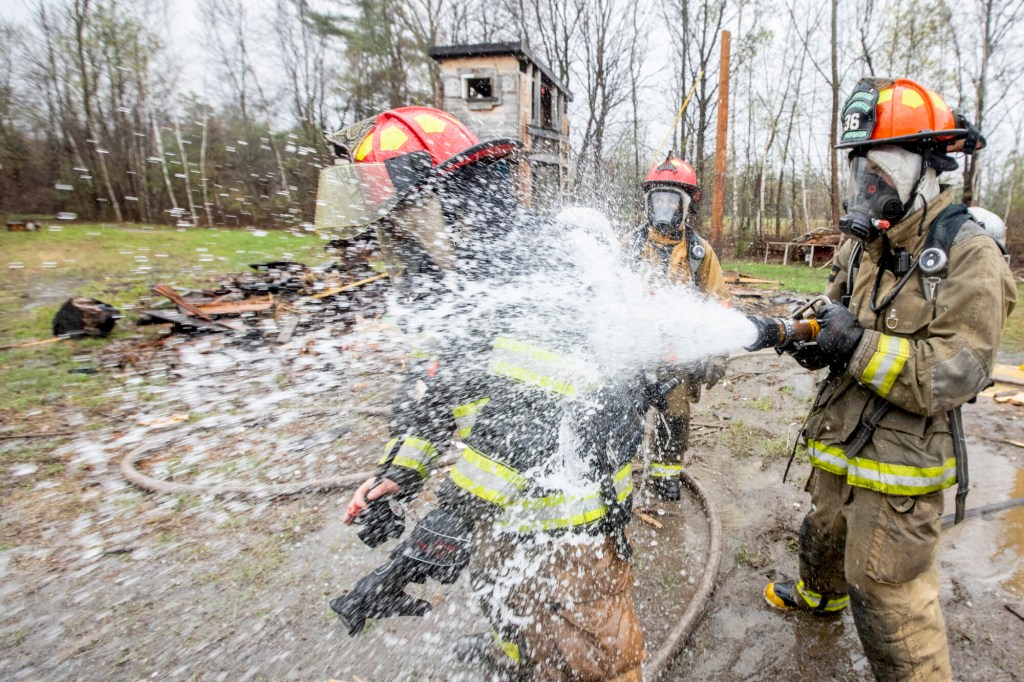

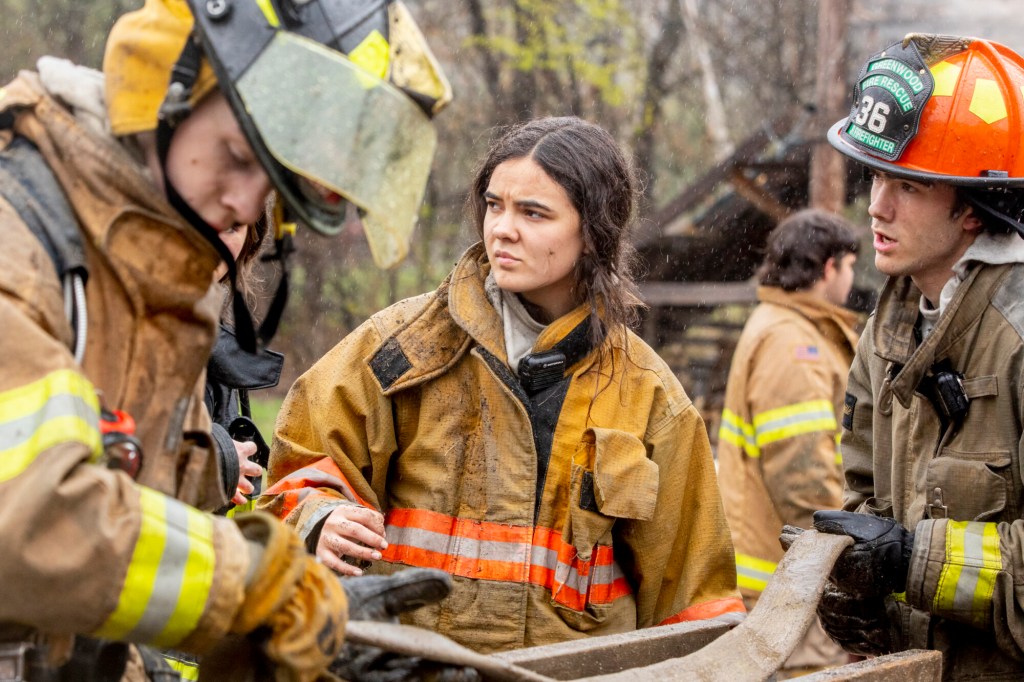
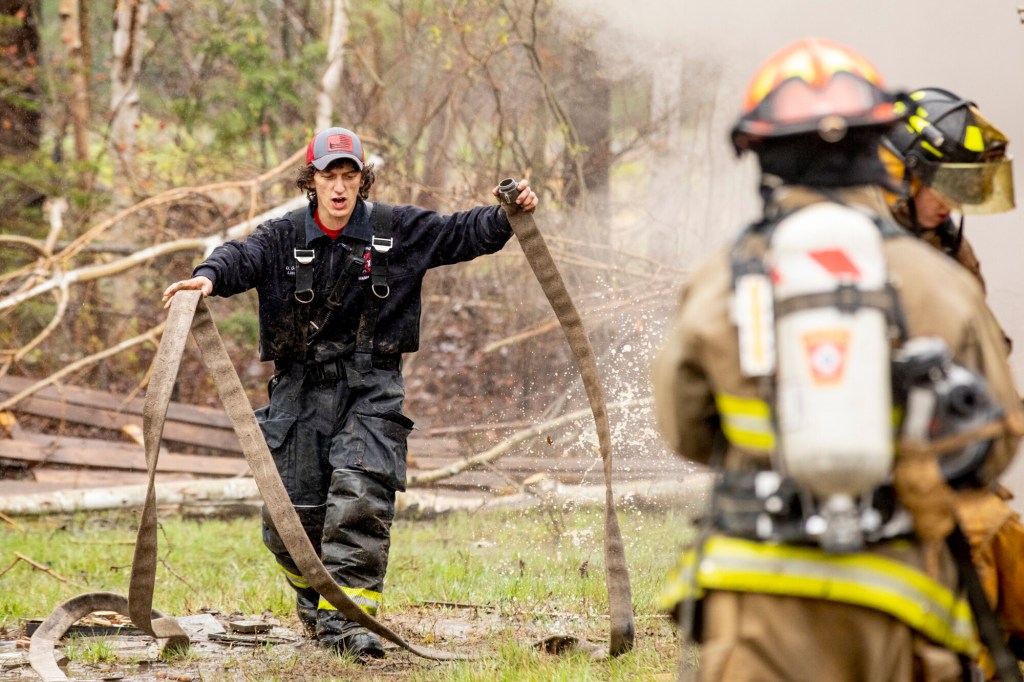
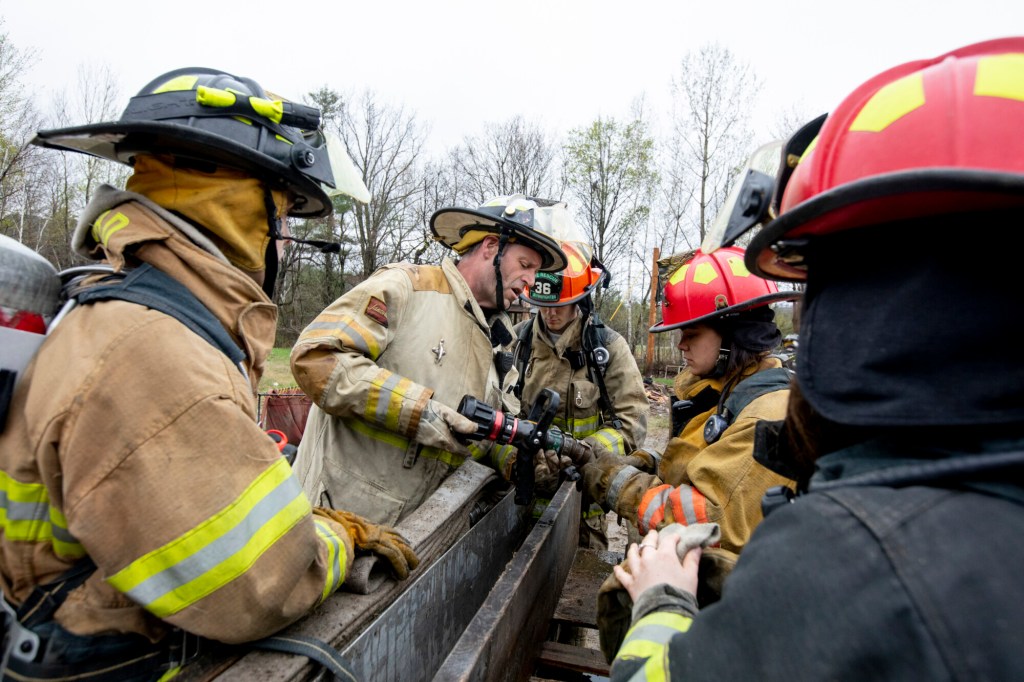
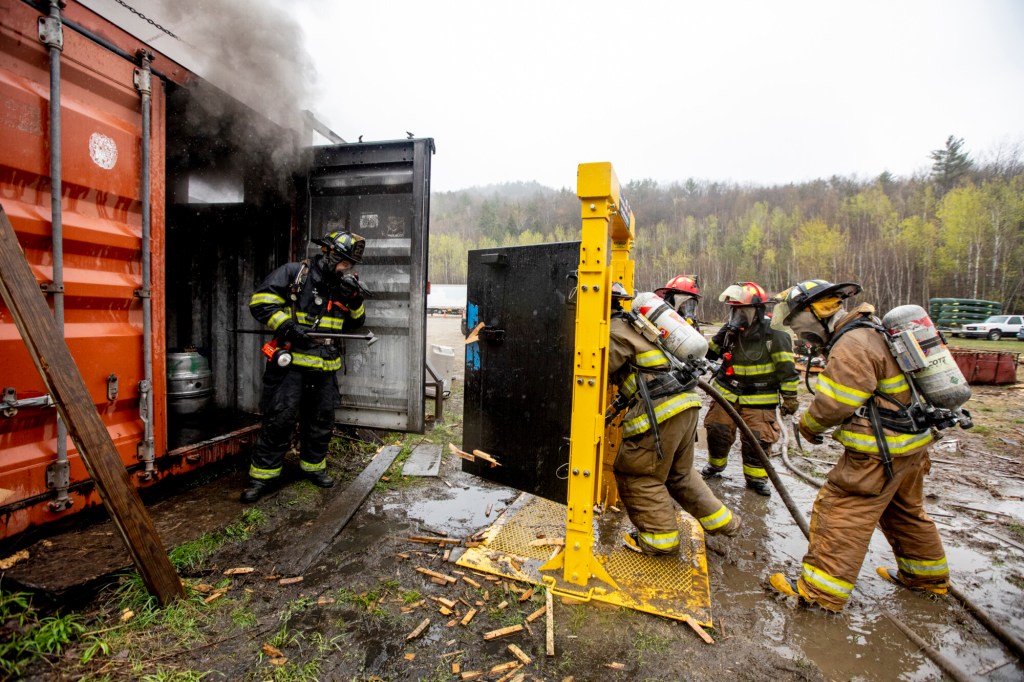
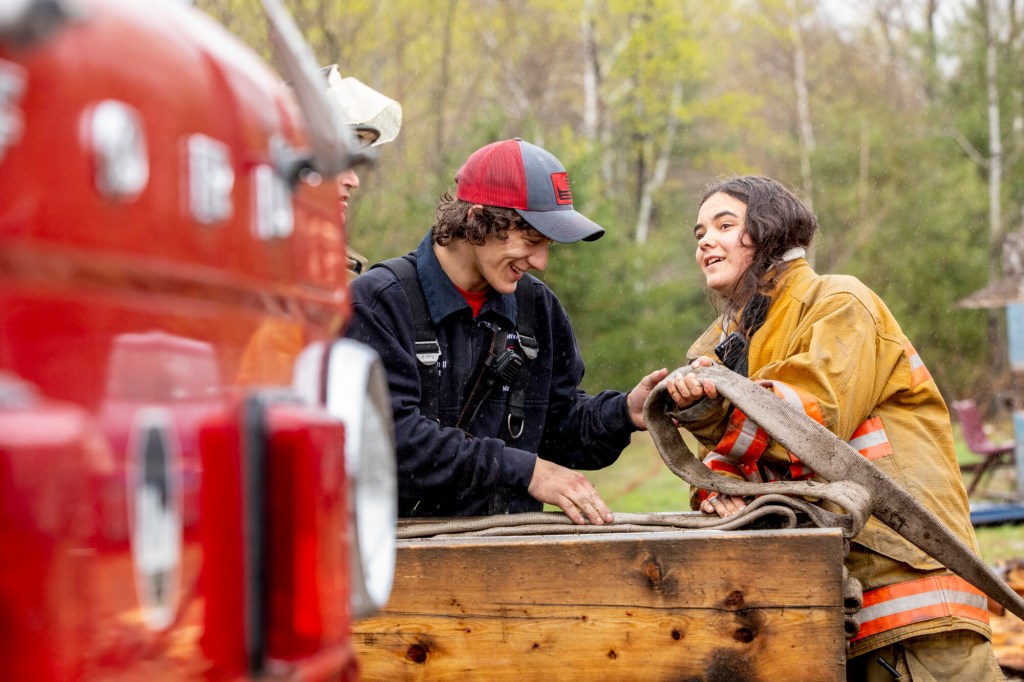
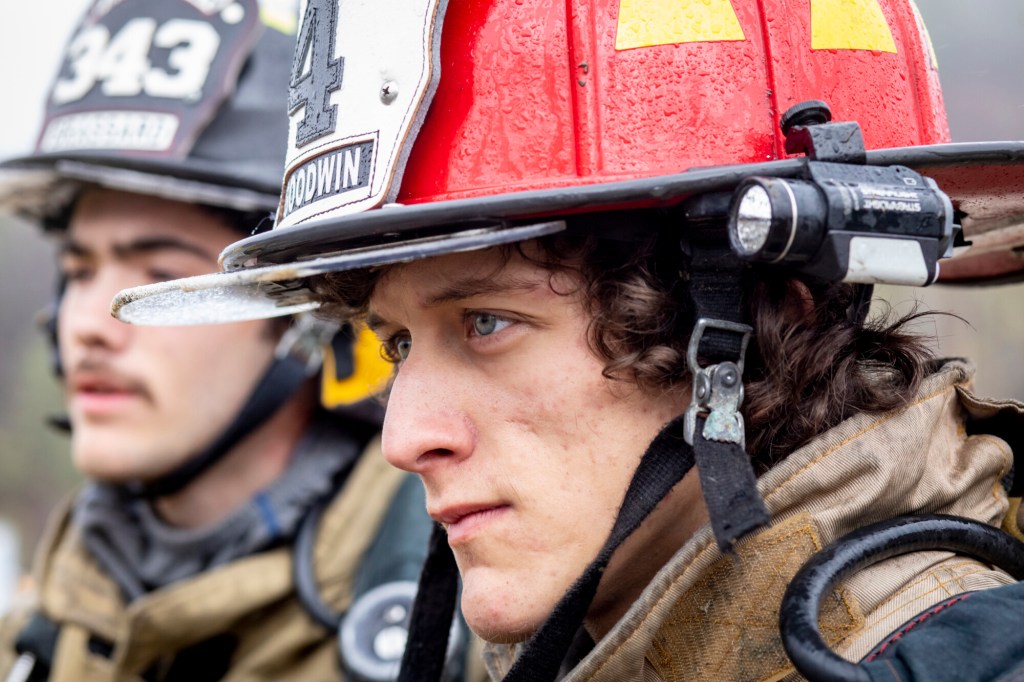

Success. Please wait for the page to reload. If the page does not reload within 5 seconds, please refresh the page.
Enter your email and password to access comments.
Hi, to comment on stories you must . This profile is in addition to your subscription and website login.
Already have a commenting profile? .
Invalid username/password.
Please check your email to confirm and complete your registration.
Only subscribers are eligible to post comments. Please subscribe or login first for digital access. Here’s why.
Use the form below to reset your password. When you've submitted your account email, we will send an email with a reset code.